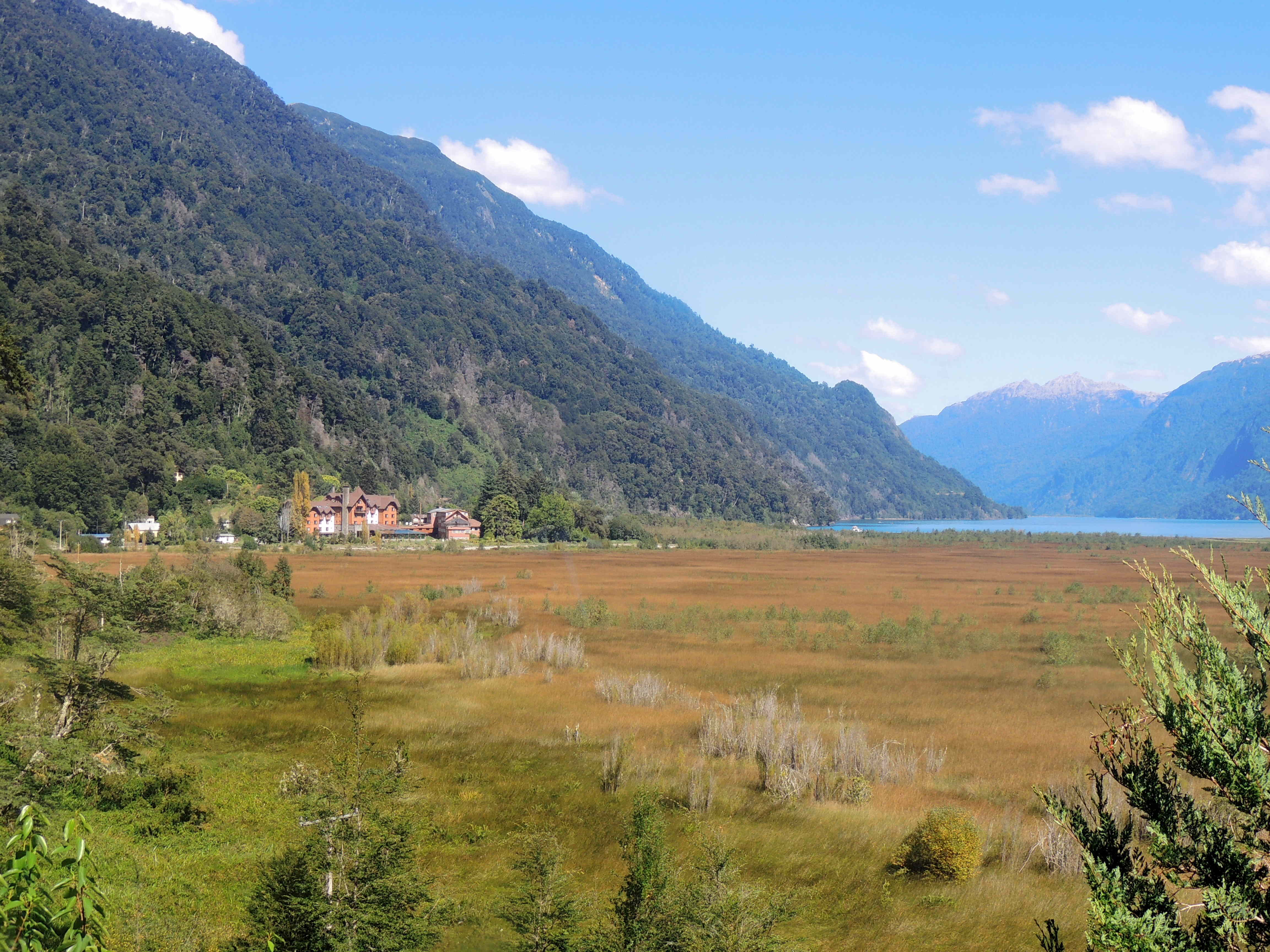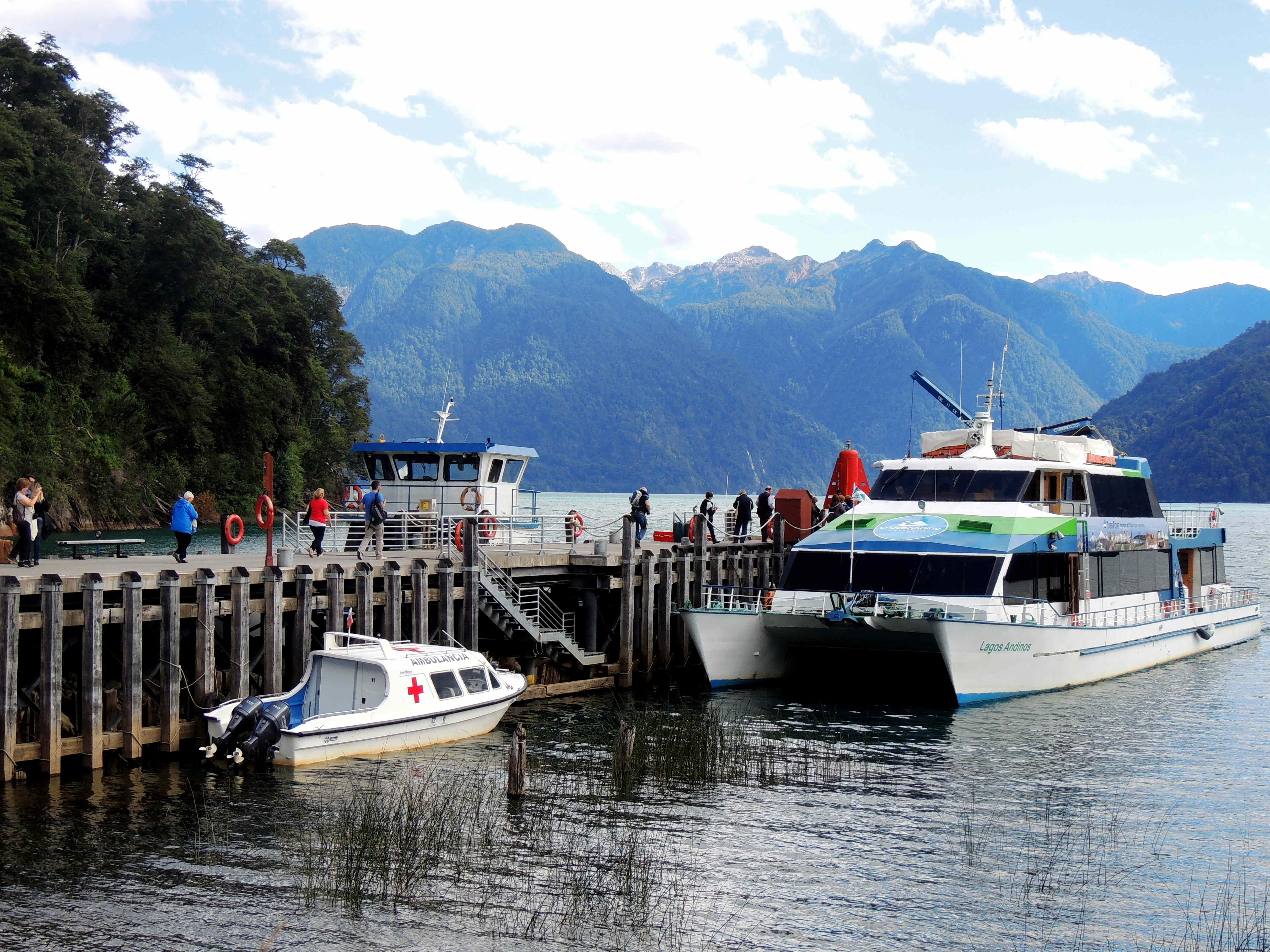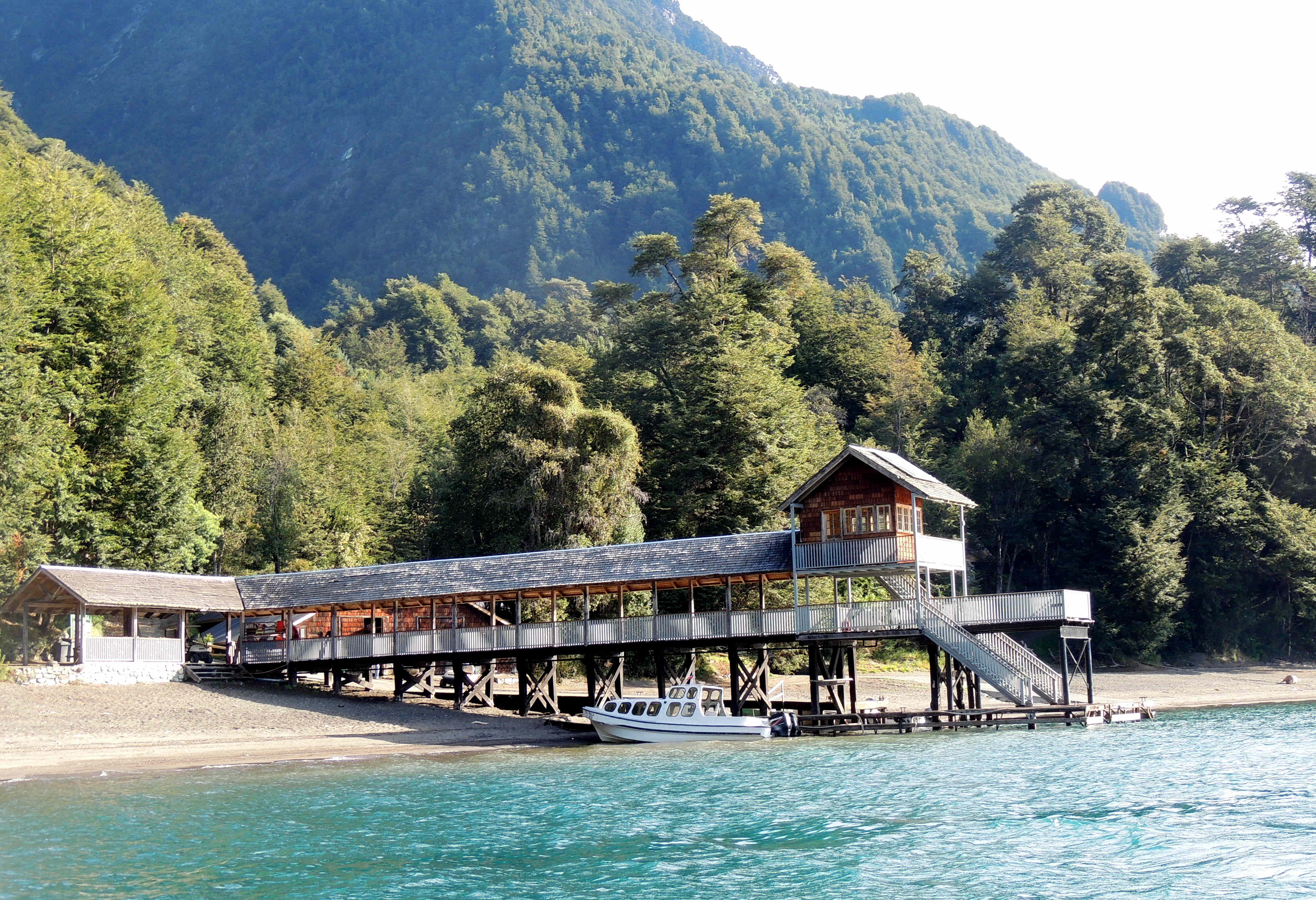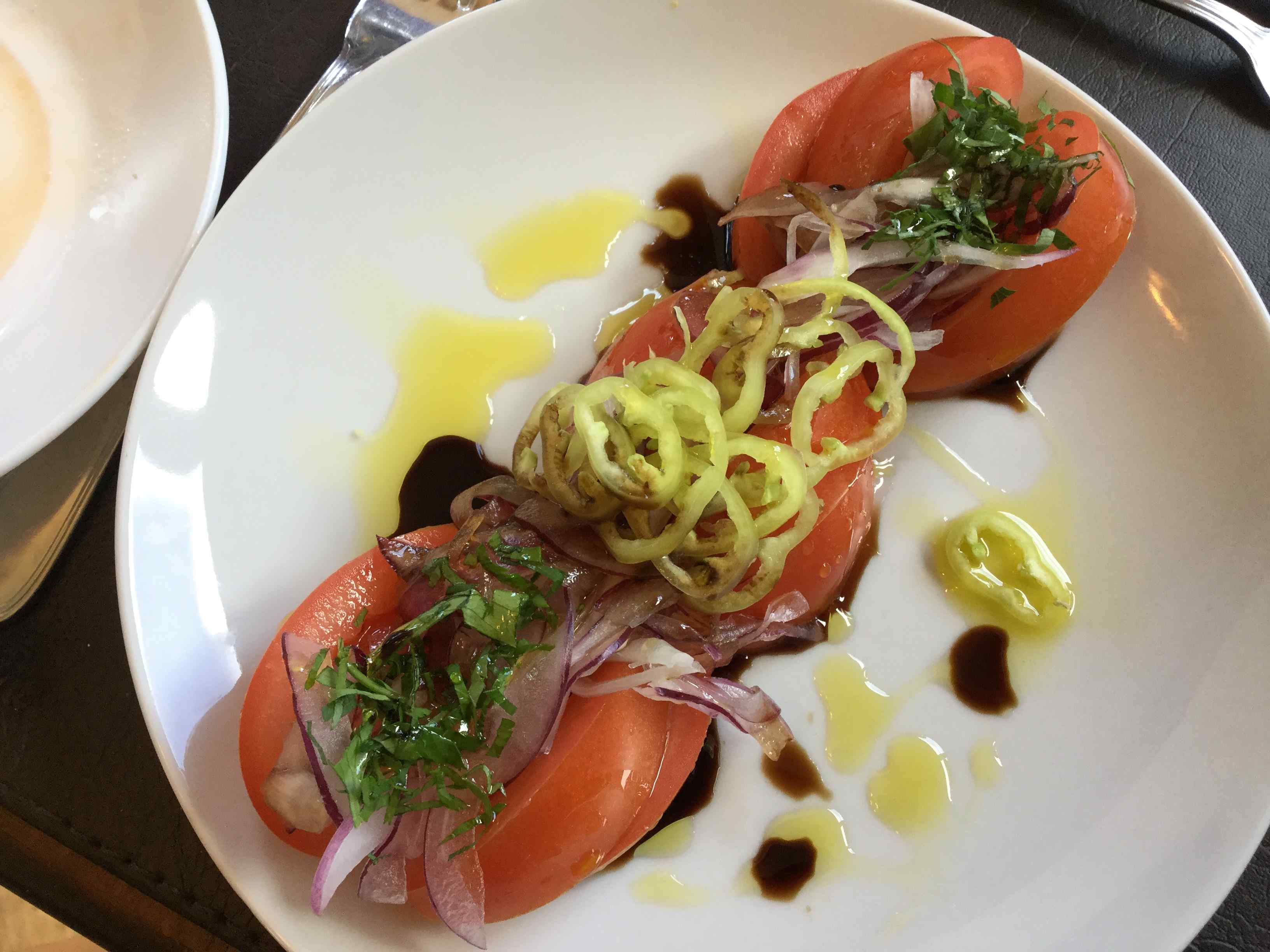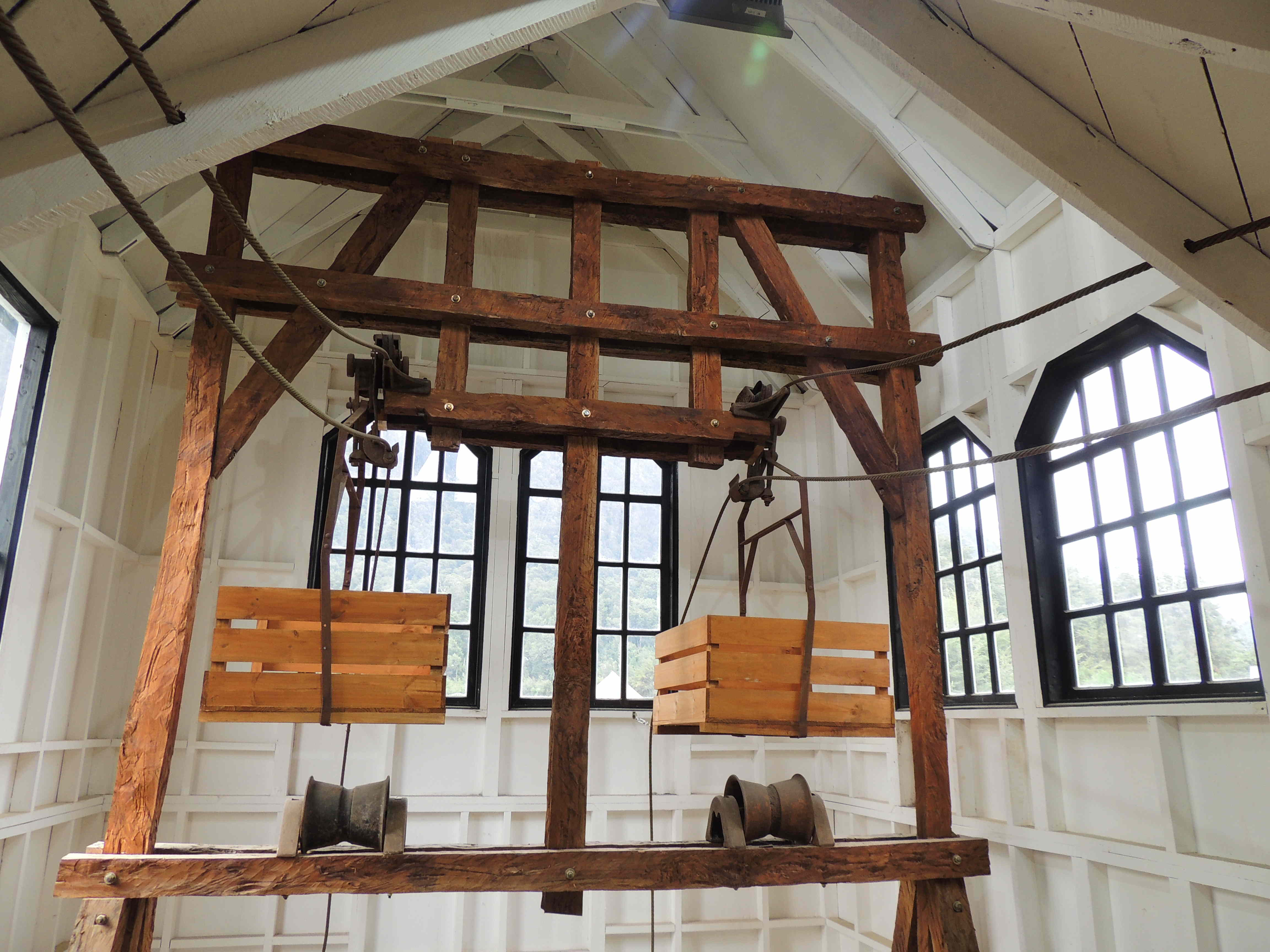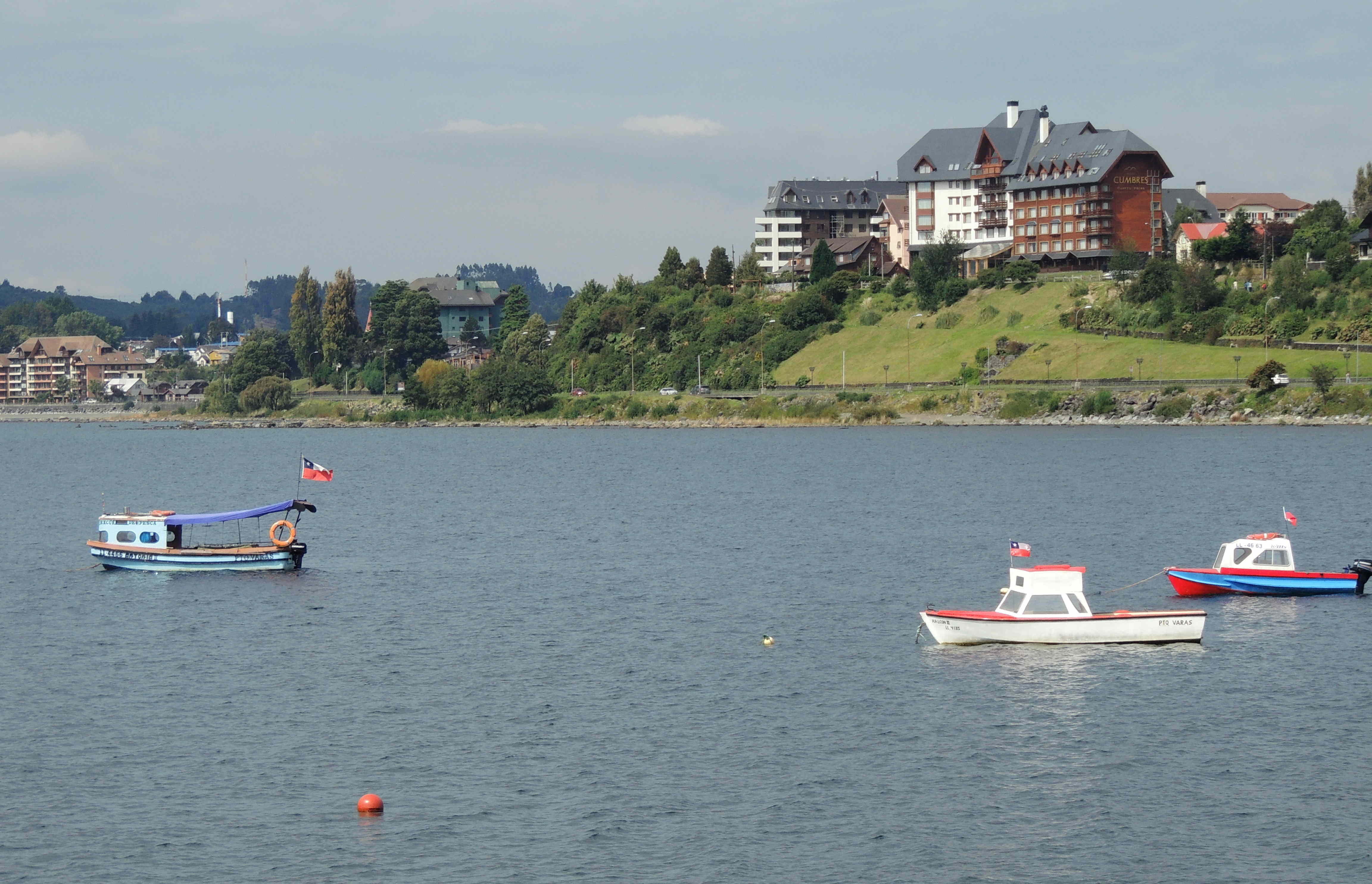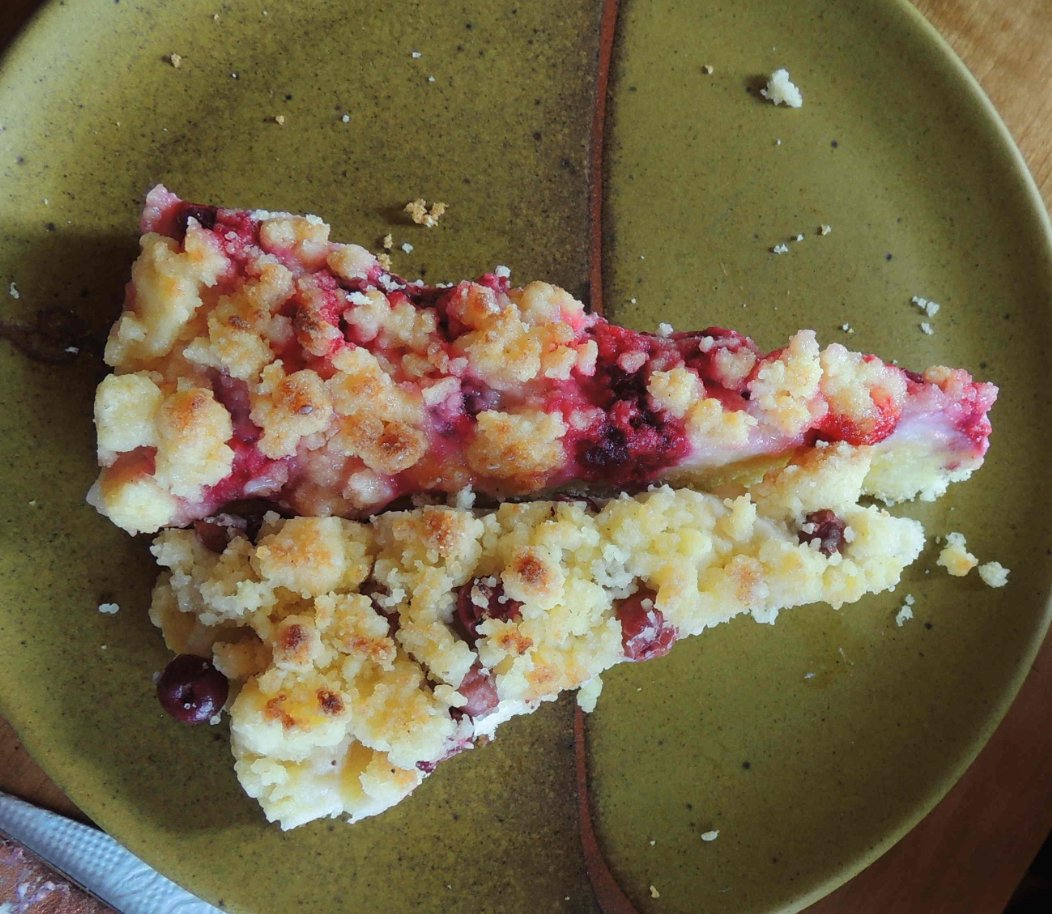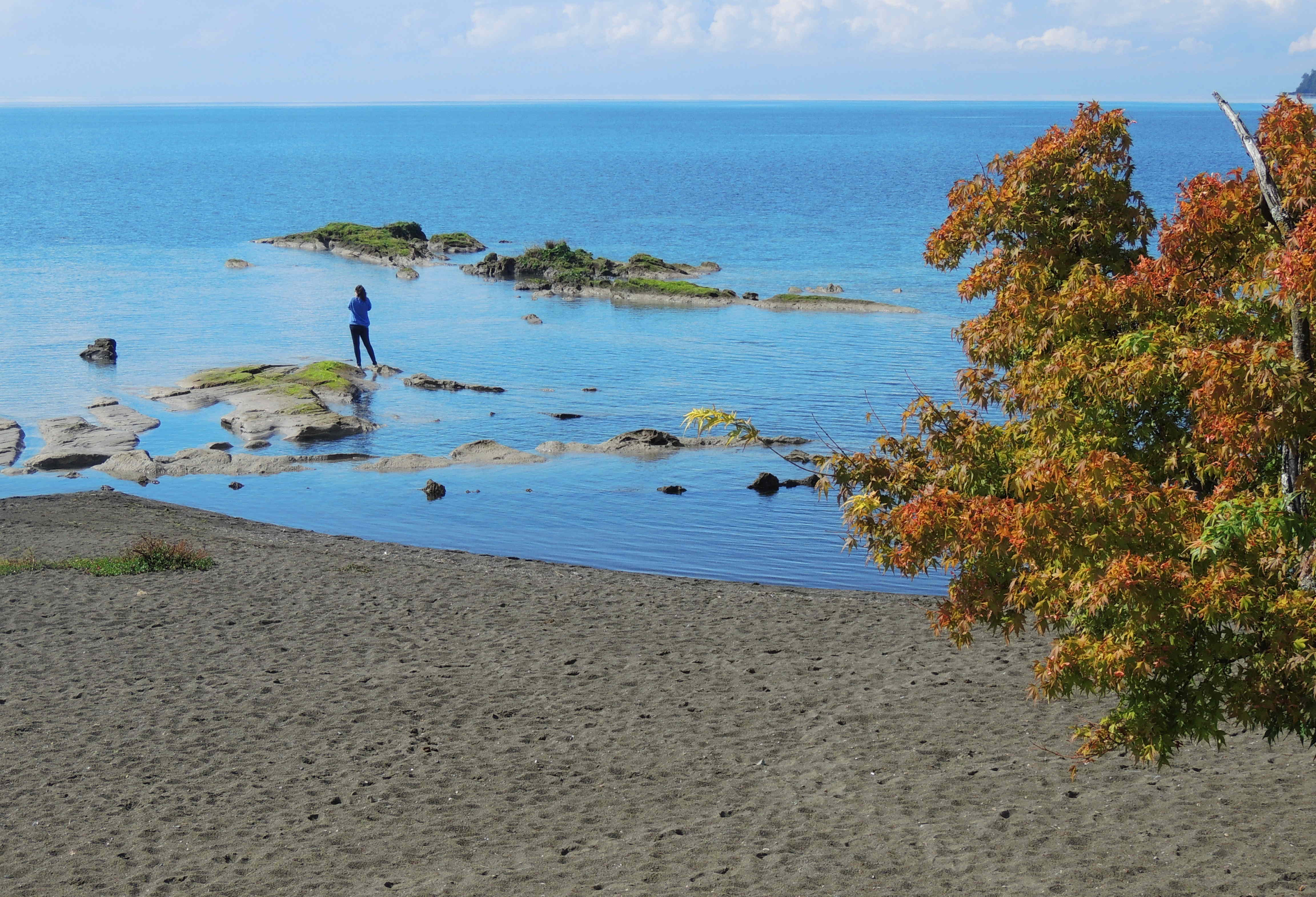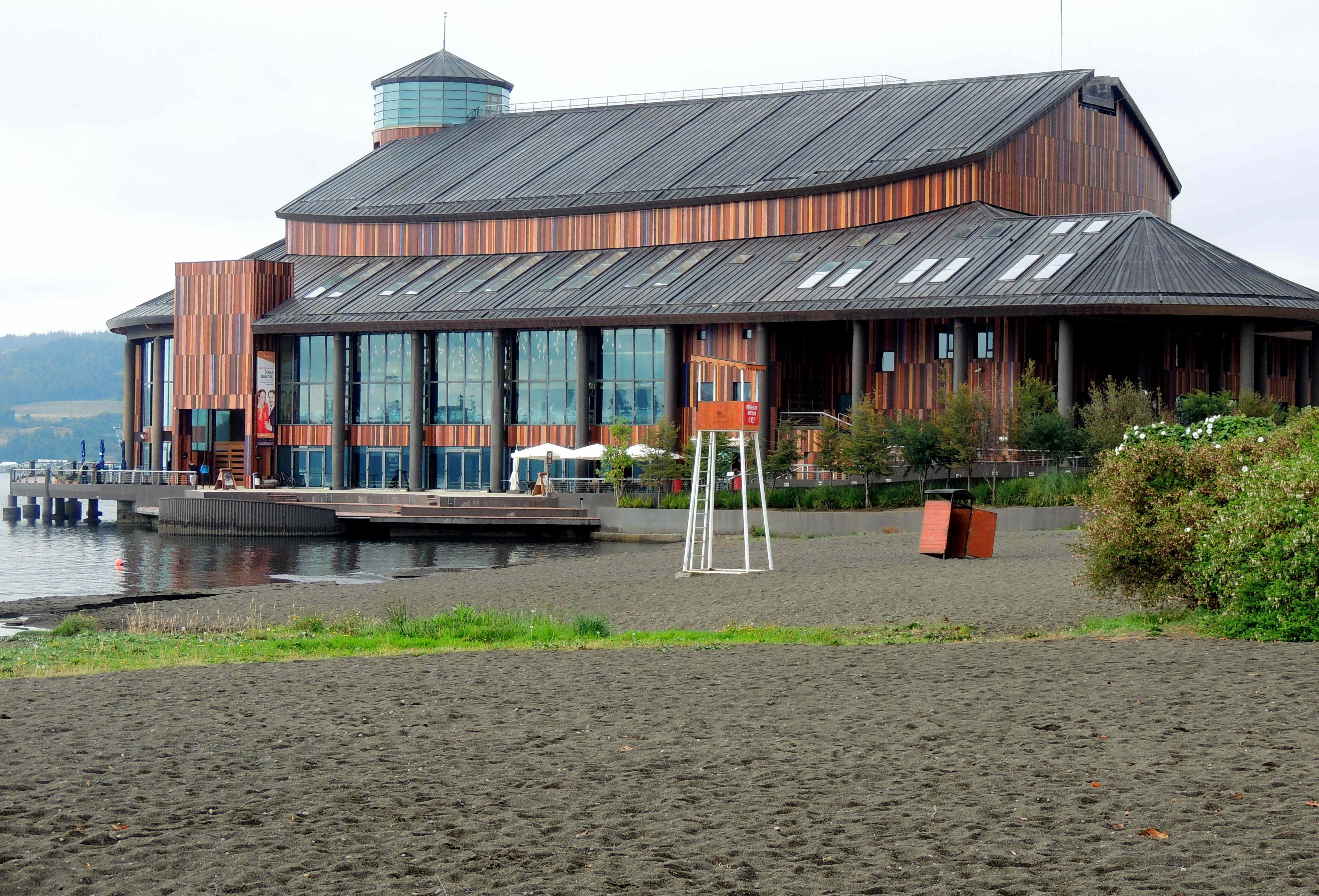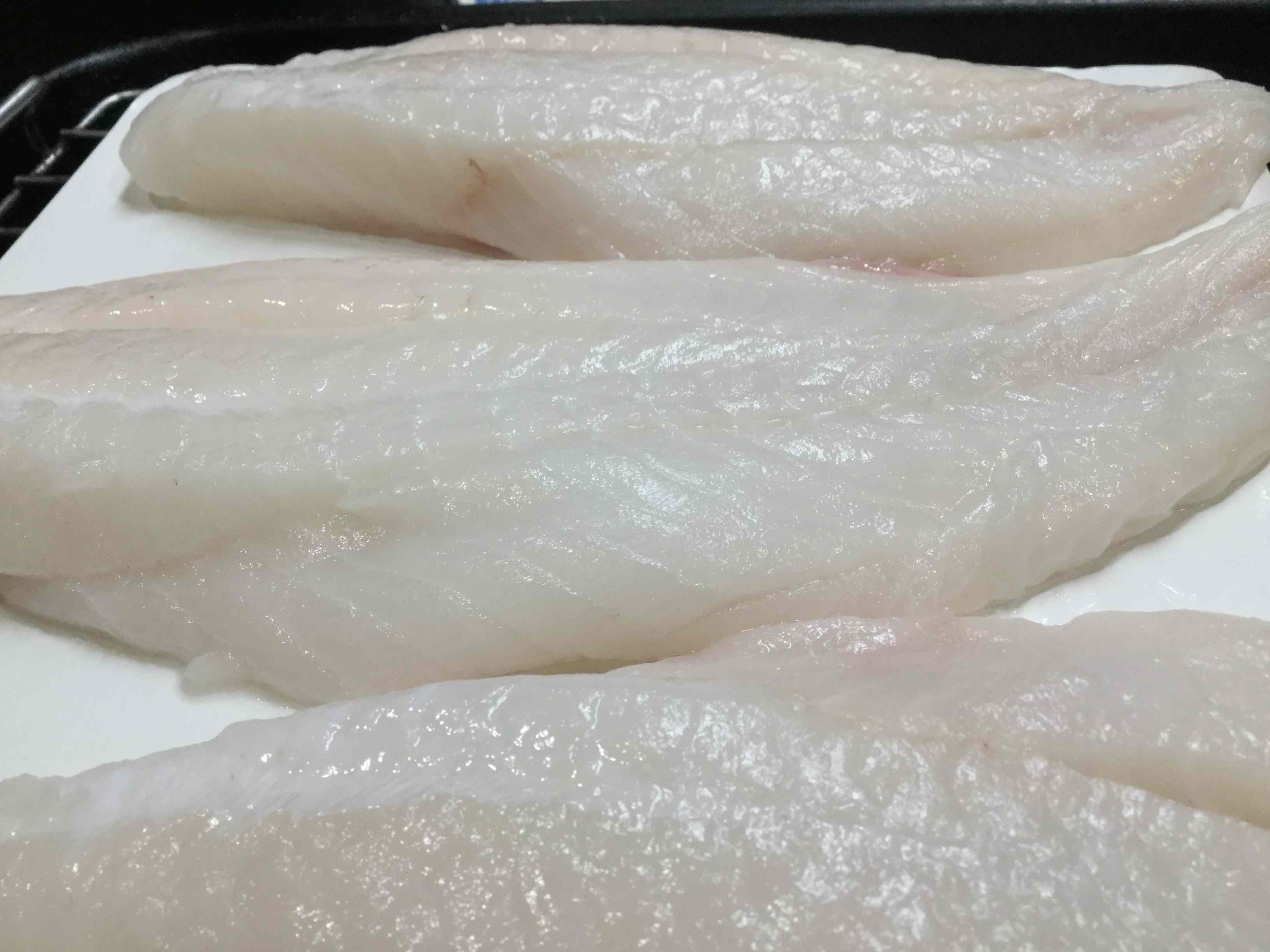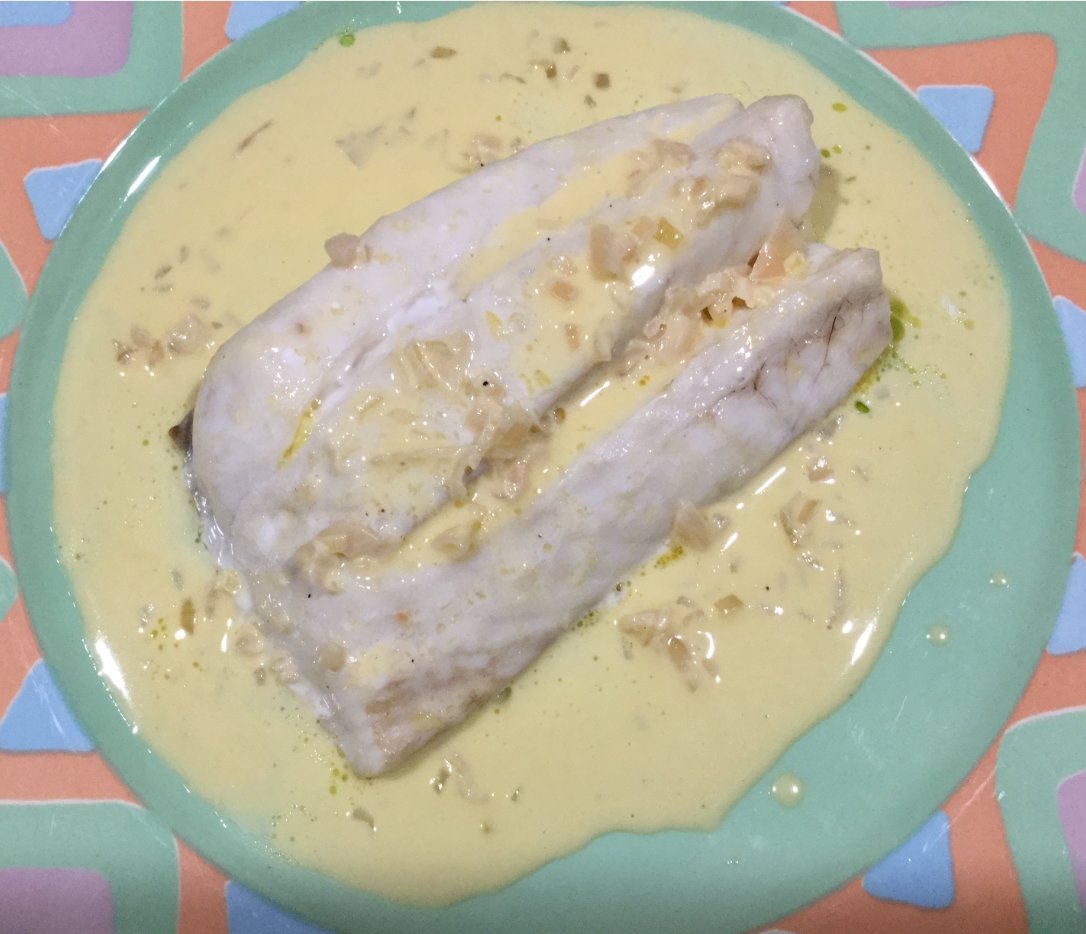This post follows on from: Argentinean Lakes
The Google satellite map below (click to enlarge) shows the extensive lakes system in northern Patagonia, stretching from Bariloche in the east (Argentina) to Puerto Varas in the west (Chile). The snow-capped Andes and various volcanoes are quite apparent. In the west, Puerto Montt is a major port, with sea connections past the islands to the Pacific Ocean. There are some sizeable townships in the region with ample choice of accommodation and restaurants for travellers.
The ocean and lakes mean the region has an abundance of wonderful fish and seafood available, something we were looking forward to.
After a bus trip which took us from Argentina into Chile we boarded a second boat to cross the second main lake on the route westwards.
The route has been opened for hundreds of years and these days there are sophisticated settlements along the way.
The volcanoes are rather mesmerising.
We had two nights at Petrohue to enjoy the lake and mountain country. Our hotel was an excellent example of how the Patagonians are geared up for tourism. The nightly price included full meals as well as organised daily activities.
The hotel meals were carefully prepared and nicely presented: a fusion of local dishes and international influences. A good example was this take on a Chilean salad, traditionally made using tomatoes, onions and capsicums, garnished with olive oil and coriander.
The organised activities ranged from visiting the local waterfalls underneath a volcano to a guided walk to climb the volcano!
Thirteen members out of our group of 16 did just that, climbing part of the way up the side of Volcan Osorno. They didn’t get anywhere near the top but they were rewarded by wonderful views.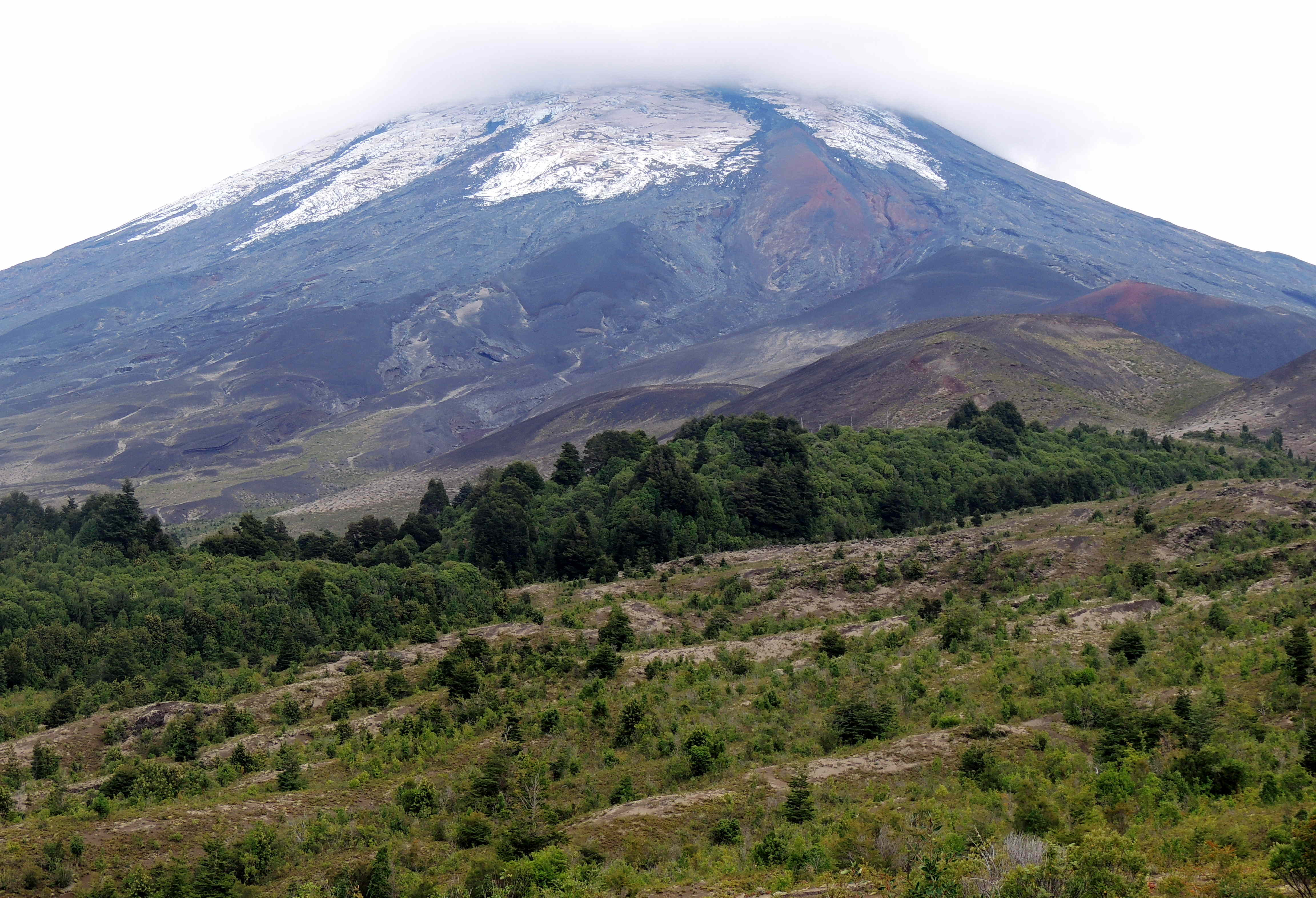
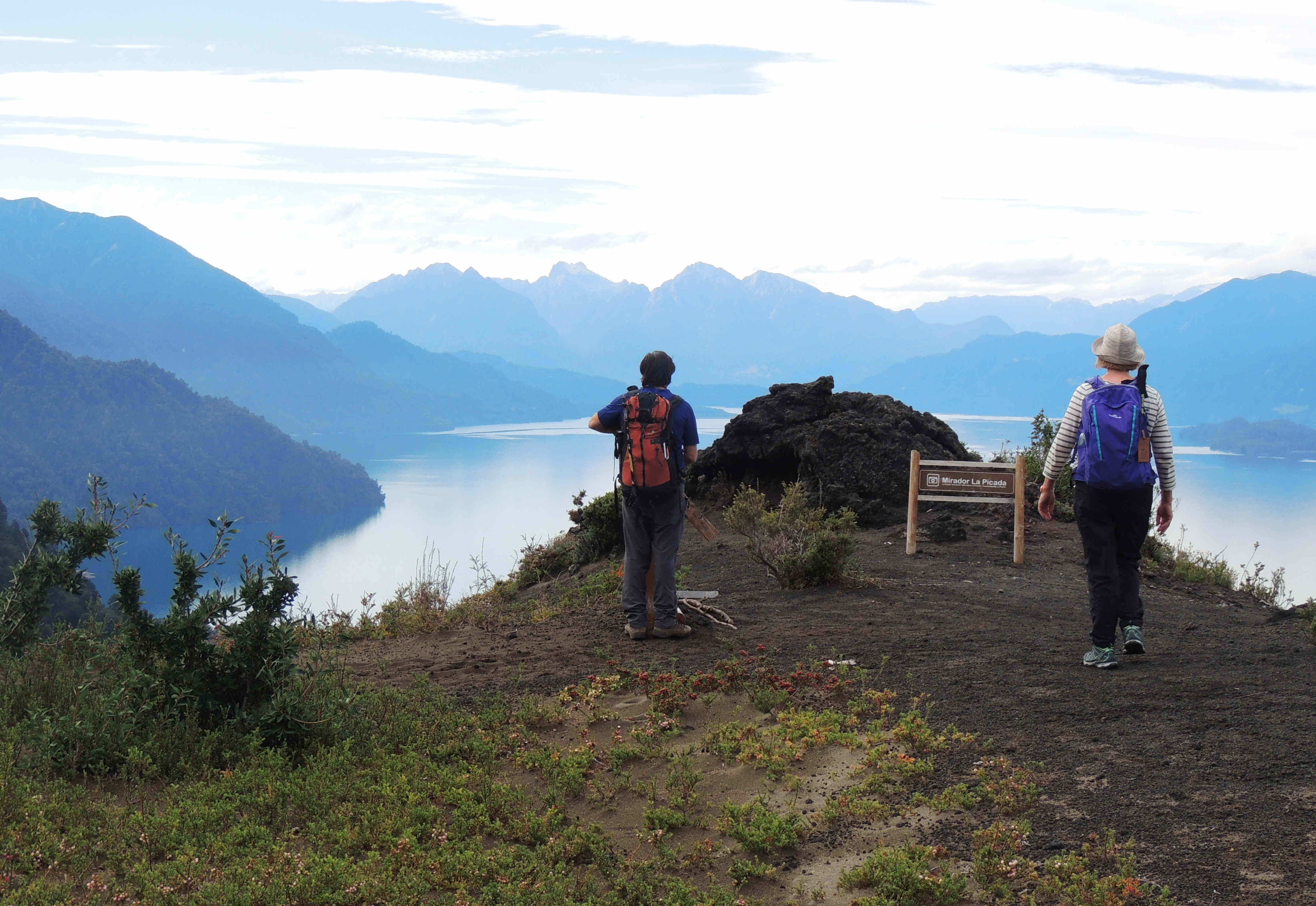
Returning to the hotel, they were treated to the most rustic of hot tubs, heated underneath by a fire from local wood.
The adjacent museum described the history of the early explorers and pioneers who cut the trail from Chile through the Andes to Argentina.
A memorable dish from the hotel kitchen was baked fish. At the end of this blog post we give a recipe for steamed-baked fish.
Next stop was Puerto Varas, a town on the edge of a large lake and with distant views to the Andes and volcano chain.
The Germanic and European influences show up in the cuisine, including the architecture and the cakes and pastries. As another example, Frutillar is a small town just north of Puerto Varas that is world famous for its classical music festivals. It has a fabulous new concert hall located on the lake shore, among music inspired sculptures.
While we managed to sample some of the range of fish and seafood, a few days was never going to be long enough. The quality was sometimes breathtaking.
There were three fish-seafood restaurants highly recommended for Puerto Varas. In the end, the group split into three, and everyone returned to the hotel with glowing reports.
Cooking fish and seafood is fraught with problems: it is expensive, it is too easy to overcook, and it is too easy to swamp it with flavours. A relatively simple way of cooking beautiful fish is given in the next post: A Way With Fish.
Click here for the next stage in our South American journey: Atacama!



